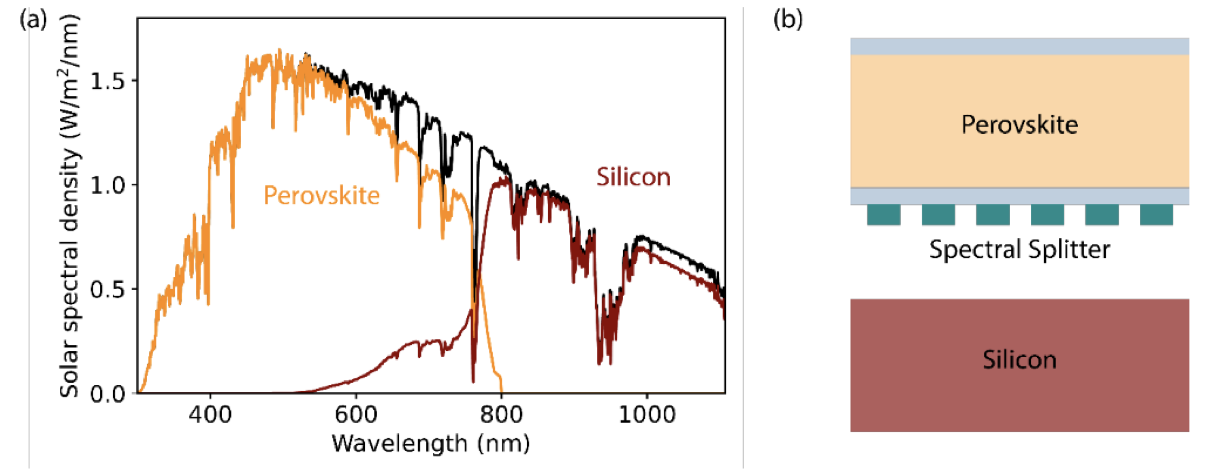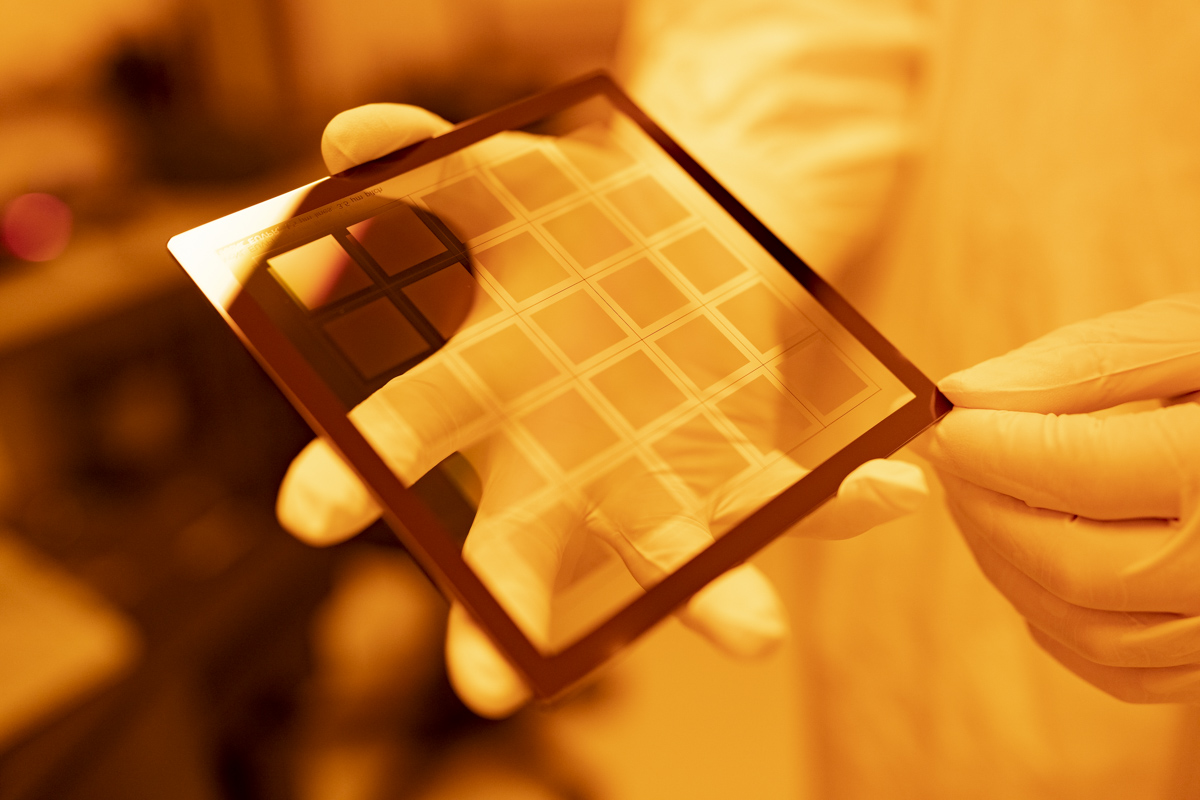Nano-optics, optical metamaterials, photovoltaics
Nanomaterials, solar cells, halide perovskites, photoluminescence quantum yield, EBSD, nanophotonics
Group: Nanoscale Solar Cells
The Nanoscale Solar Cells Group synthesizes advanced metal and semiconducting nanostructures, characterizes their material properties and integrates them into novel device structures with the aim of improving our fundamental understanding of energy conversion.
Potential applications
- Solar Cells
- LEDs
- Power generating windows
- Photonics enhanced crop production
- Material learning
Computational nanophotonics
Group: Resonant Nanophotonics
We study how you invert far-field optical measurements of scattering into nanoscopic geometrical information using algorithmic analysis approaches. This combines wavefront shaping (input light), metasurfaces (transducing near-to-far field) and computational reconstruction.
Potential applications
- Nanoscopy, near field imaging
- Metrology
- Optical sensing
Reference
Röhrich, R. (2020, December 11). Unconventional metrology: Merging nanophotonics with computational imaging
Hybrid plasmonic-photonic resonators
Group: Resonant Nanophotonics
Hybrid plasmonic-photonic resonators confine light in deep sub wavelength dimension, yet at narrow spectroscopic lines. These waveguide-addressable hot spots are ideal for sensing, and SERS.
Potential applications
- Optical sensing
- SERS / Raman
- Enhanced light-matter interaction
Reference
H.M. Doeleman, C.D. Dieleman, C. Mennes, B. Ehrler and A.F. Koenderink, Observation of Cooperative Purcell Enhancements in Antenna-Cavity Hybrids, ACS Nano 14, 9: 12027-12036 (2020)

Mathematics at the speed of light: optical metamaterials performing mathematical operations.
Group: Photonic Materials
We develop optical metasurfaces, nanostructured arrangements of silicon nanoscattereres, that perform mathematical operations on optical input fields. This provides a new way of information processing at ultra-high speed and ultra-low power consumption.
Potential applications
- Autonomous driving
- Augmented reality
- Low-energy/green ICT
Reference
A. Cordaro, H. Kwong, D.L. Sounas, A.F. Koenderink, A. Alù and A. Polman, High-index dielectric metasurfaces performing mathematical operations, Nano Lett. 19, 12: 8418-8423 (2019)
Molecular Optomechanics
Group: Resonant Nanophotonics
SERS / Surface Enhanced Raman Scattering. in nanometer-wide junctions between metals provides few-molecule spectroscopic signatures of materials, and can monitor in situ chemical reactions.
Reference
A. Xomalis, R. Chikkaraddy, E. Oksenberg, I. Shlesinger, J. Huang, E.C. Garnett, A.F. Koenderink and J.J. Baumberg, Controlling Optically Driven Atomic Migration Using Crystal-Facet Control in Plasmonic Nanocavities, ACS Nano 14, 8: 10562-10568 (2020)
Nanophotonics for enhanced solid-state light sources
Group: Resonant Nanophotonics
We develop plasmonic antennas and dielectric metasurfaces to control the directivity, efficiency and brightness of optically driven solid-state emitters, like II-VI quantum dots, organic molecules, and perovskites.
Potential applications
- Solid-state lighting
- Quantum optics
- Substrates for fluorescence microscopy
Reference
A. Vaskin, R. Kolkowski, A.F. Koenderink and I. Staude, Light Emitting Metasurfaces, Nanophotonics 8, 7: 1151-1198 (2019)
Nanophotonics lasers
Group: Resonant Nanophotonics
Nanolasers on basis of plasmonic and metamaterial arrays are a 2D technology, have controllable output beam patterns and coherence, and may provide a solution for blue-laser pumped lighting.
Potential applications
- Directional light sources, e.g., for projection
Reference
A.F. Koenderink, Plasmon Nanocavity Array Lasers: Cooperating over Losses and Competing for Gain, ACS Nano 13, 7: 7377-7382 (2019)
Nanophotonics, nanomechanics
Group: Photonic Forces

We study light-matter interactions at the nanoscale, in particular the coupling between photons and phonons in nano-optomechanical systems. We seek to engage the conventional limits to nanophotonic and nanomechanical functionality, in application domains from sensing and metrology to communication.
Potential applications
- Nanomechanical sensors
- Optical metrology
- Quantum sensing
- Integrated photonics
Quantifying single photon emitter physics
Group: Resonant Nanophotonics
Novel materials like single quantum dots, and engineered quantum light sources, require full understanding of their photophysics in terms of single-emitter quantum efficiency, emission rates, photostability and intermittency. We developed a full suite of hardware and software tools.
Potential applications
- Novel emitter materials, e.g., for LEDs
- Quantum light sources
Reference
Isabelle M. Palstra, Ilse Maillette de Buy Wenniger, Biplab K. Patra, Erik C. Garnett, and A. Femius Koenderink, Intermittency of CsPbBr3 Perovskite Quantum Dots Analyzed by an Unbiased Statistical Analysis, J. Phys. Chem. C, (2021)
Ion Migration in Perovskite Solar Cells
Group: Hybrid Solar Cells

We study the behaviour of ions in perovskite solar cells. These ions lead to degradation which, and better understand can hence lead to more efficient and stable perovskite solar cells.
Potential applications
- Perovskite solar cells
- Batteries
- Iontronics
Reference
M.H. Futscher, J.M. Lee, L. McGovern, L.A. Muscarella, T. Wang, M.I. Haider, A. Fakharuddin, L. Schmidt-Mende and B. Ehrler, Quantification of Ion Migration in CH3NH3PbI3 Perovskite Solar Cells by Transient Capacitance Measurements, Mater. Horiz. 6, 7: 1497-1503 (2019)
Light trapping in solar cells
Group: Photonic Materials

We design and fabricate optical metasurfaces that help couple, trap and spectrally split light in single-junction and tandem solar cells.
Potential applications
- Solar cells of all kinds
Reference
Verena Neder, Dong Zhang, Sjoerd Veenstra, Albert Polman, Four-terminal perovskite/silicon tandem solar cell with integrated Mie-resonant spectral splitter metagrating, arXiv:2012.12649v1 [physics.optics]


